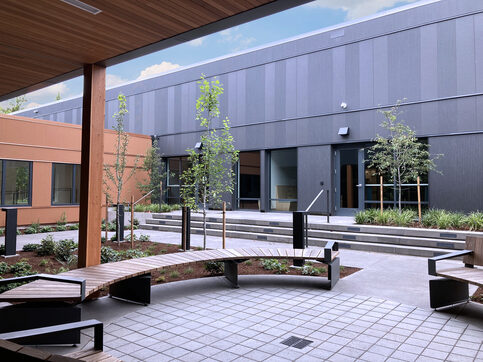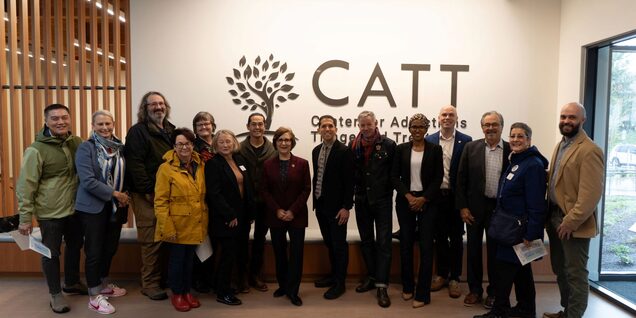Frequently Asked Questions
Thank you for wanting to learn more about this project. We have additional information on our frequently asked questions page about the CATT in English, or click on the language translations below.
Service Locations
The CATT has services in two locations. The Beaverton location (opening in November 2025) includes intensive, residentially based services. Our Hillsboro location provides a variety of community outpatient services.
Beaverton Recovery Center

Our Beaverton site is located at 17911 NW Evergreen Place in Beaverton, Oregon. Construction began in July 2024 and was completed in October 2025. We will begin offering services in November 2025. CODA, Inc., will provide services at this site.
- Residential Treatment: A facility-based treatment program where a person lives in a supportive environment and learns the skills to avoid relapse. Services are commonly 30-90 days. The CATT has 24-28 men’s and 20-28 women’s residential beds.
- Sobering: Designed to support an individual who is acutely intoxicated. Services include monitoring vital signs, providing fluids and nutrients and offering a safe and supportive environment. Length of stay is typically very short, generally ranging from 4-12 hours. The CATT has 16 sobering beds.
- Withdrawal Management (also known as detox or detoxification): Provides medical monitoring and support to individuals who have developed a physical dependence on alcohol or opiates. This is typically a short-term service, often with transition to residential services upon discharge. The average length of stay is 3-5 days. The BRC has 16 detox beds.
- Transitional Services: This program will provide short-term support for individuals as they transition out of residential treatment care and move to their next residence. Most individuals will stay 2-4 days. The BRC has six beds for this service.
Hillsboro Recovery Center (HRC)

This site, at 5250 NE Elam Young Parkway, Hillsboro, Oregon, has a variety of community services to support people with substance use disorders and other behavioral health conditions.
The HRC opened in June with services from the Hawthorn Walk-In Center and Washington County Behavioral Health. In July, Solutions Group NW, Project Homeless Connect, and The Peer Company (formerly Mental Health & Addiction Association of Oregon) began providing services on-site, marking the broader opening of the community services portion of the CATT. Virginia Garcia will join the center in the fall.
- Peer Drop-in Center: The Peer Company (formerly Mental Health & Addiction Association of Oregon) operates the peer drop-in center at the CATT. The center is a space where individuals in recovery and their friends, family and other supports can come together. Drop-in centers provide opportunities for connection, mutual support, and development of peer networks and resources, all of which are critical to recovery.
- Outpatient Substance Use Disorder Treatment: Our outpatient services focus on the Latinx community and include treatment interventions, peer supports, medication management and counseling. Solutions Group NW provides the outpatient services in Spanish (with English available).
- Crisis Services/Hawthorn Walk-In Center: This program offers urgent behavioral health crisis intervention, assessment and stabilization services. It provides connection to both mental health and substance use treatment services. LifeWorks NW is the service provider.
- Virginia Garcia Memorial Health Center will provide onsite health-related supports for people receiving services from other providers at the CATT. Individuals who have problem substance use often have health care needs as well.
- Project Homeless Connect is on-site to support individuals referred to them by other providers at the HRC.
- Washington County Behavioral Health has relocated across the parking lot to the new facility.

